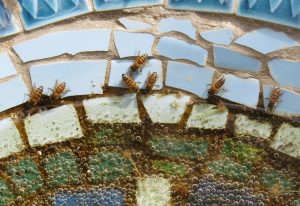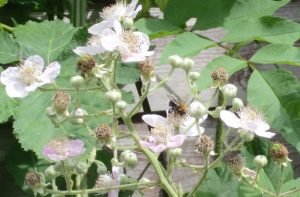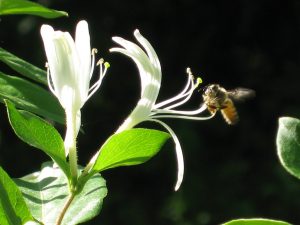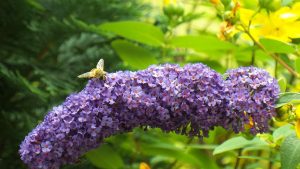
Bees are invaluable when it comes to gardening, landscaping, and agriculture. Without them, the produce and gardening industry would likely be nonexistent. Knowing the importance of pollinators, it is alarming to hear that some species of bees have been placed on the Endangered Species List! Recently, in the state of Hawaii, the U.S. Fish and Wildlife Service announced that 7 of their yellow-faced bee species would be added to the list of endangered species.
How can we support bees in our landscape? What can you, the average American home owner, do to support local bee populations? We have compiled a list of things to consider in your yard or landscape to help support and strengthen the local bee population.
The first is the proper use of pesticides. An article entitled “How to Reduce Bee Poisoning from Pesticides” goes into great detail on how to protect bees from overexposure. It is a Pacific Northwest Extension Publication. While it mainly discusses pesticide use on large agricultural operations, there are points that can be used in the home garden. These include always reading the pesticide labels before application, not applying while bees are foraging, not applying while plants are in bloom and knowing where your local hives are located.

Think twice before removing or killing all the weeds in your yard or garden. Dandelions, clover, and blackberries may be a nuisance to your grass, but the bees LOVE these “wildflowers” that we call weeds. If you do want to remove them, consider waiting until after the flower to allow bees to harvest the pollen. Then remove before the plants go to seed.

Bee’s need water just like all living things! Leave a small dish of water in or near your garden with a few stones set in it that can be used as platforms for the bees to land on and drink from.
Bee populations can also be supported by planting vegetation that attracts pollinators. To attract bees to your home garden consider planting:

Fruit Trees: Apple, Pear, Cherry

Berries: Raspberry, Blackberry

Trees: Vine and Big Leaf Maples, Crabapples, Willows, Elderberry

Vines: Honeysuckle, Porcelain Berry Vine

Shrubs: Ceanothus, Lilac, Oregon Grape, Currant, Snowberry

Herbs: Lavender, Sage, Mint, Catnip, Rosemary, Basil

Perennials: Lupine, Aster, Columbine, Phlox, Foxglove, Joe-pye Weed, Bee Balm, Hyssop

Annuals: Zinnia, Cosmos, Sunflowers

Cover Crop: Crimson/White Clover, Buckwheat
